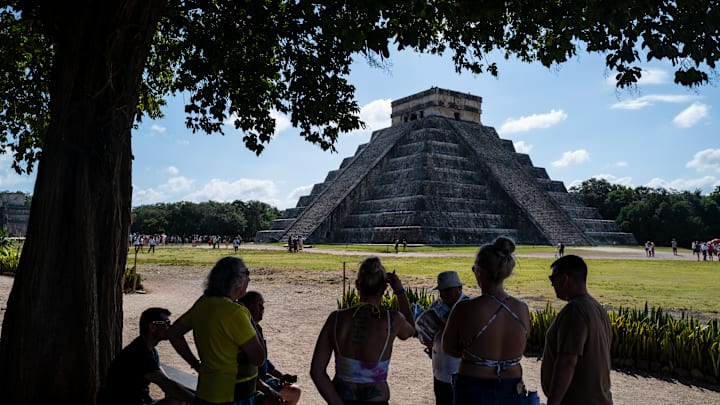Once again, unthinking and disrespectful tourists are making legitimate travelers look bad. A German tourist visiting the Yucatan in Mexico decided to swing by the Chichen Itza complex, as millions of tourists do every year. Unfortunately, this tourist decided to climb the Temple of Kukulcan. This has been illegal for many years as climbing it causes damage to the pyramid. It's a look but don't touch scenario for incredibly legitimate reasons, something 99.99999% tourist seem okay with.
Site security and members of the Mexican National Guard apprehended the tourist and took him into custody. Locals reputedly both physically and verbally assaulted the man has he was being led away. In addition to damaging the temple, the act of climbing it is actually quite dangerous. The steps are steep and ancient, meaning it's quite easy to lose your footing, fall, and get injured. For both the safety of the public and the temple, access became restricted to approved professionals in 2006.

The German tourist has been arrested, and will likely face fines as well as potential jail time. This is not the first time in recent years a tourist has climbed the pyramid. In 2022, a female tourist climbed the temple and was arrested. She only received a fine at the time, though there remains the potential for further action from the Mexican government. While she received no jail time then, there were calls to make an example out of her to deter other people. This new German offender may fill that role.
Chichen Itza is a massive pre-Colombian city in the Yucatan, aspects of which date back to 750 AD. After the end of the Mayan Civilization, largely due to Spanish conquest, the city fell into disrepair and was swallowed by the jungle. Efforts reclaim and study the city began in the 1800s, establishing it as a central part of the archaeological study of Mexico's history. It has also become a massive tourist site that attracts nearly three million visitors every year.
